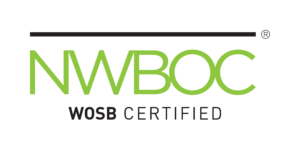MEMORANDUM FOR THE SENIOR EXECUTIVE SERVICE
(SEE RECRUITMENT SECTION BELOW)
FROM: Jeffrey D. Zients, Federal Chief Performance Officer and Deputy Director for Management, Office of Management and Budget (OMB)
John Berry, Director, Office of Personnel Management (OPM)
DATE: February 18, 2011
SUBJECT: Senior Executive Service Initiative
The President’s State of the Union address highlighted wide-ranging challenges facing our country and the need to improve government operations to meet those challenges. In September 2010, you received a memo that outlined the Administration’s Accountable Government Initiative (AGI) and our plans to embrace technological innovations and management best practices to improve effectiveness, efficiency, and customer service. As leaders across Federal agencies, members of the Senior Executive Service (SES) are at the forefront of transforming government operations. Your leadership and expertise are critical to our success, and we appreciate the talent, knowledge, and perspective you bring to navigating this difficult terrain.
At the very time we need ever greater output and performance, the SES is under tremendous pressure. Today’s economic environment constrains agency budgets and Federal employee pay; these limitations complicate developing, recruiting, and retaining senior executives. You are consistently asked to do more with less against a backdrop of heightened accountability for performance and too few professional development opportunities. At the same time, the best organizations know that especially in challenging economic times, investing in their senior executives pays off.
In the context of these challenges and others we have heard from you and your colleagues, last May the President’s Management Council (PMC) launched a collaborative, cross-agency initiative to strengthen the SES corps. To shape this project, we consulted with a range of experts, including past and present SES, the Senior Executives Association, and the Partnership for Public Service. Three PMC-chartered working groups analyzed key issues and identified potential enhancements, which we want to share with you. This document summarizes proposals to:
- Improve SES professional development programs
- Streamline burdensome administrative processes
- Strengthen personnel performance management
- Expand and diversify executive talent pipelines
Your insights and engagement will be essential to translating these ideas into reality. The PMC will provide ongoing leadership and oversight, while the Office of Management and Budget (OMB), the Office of Personnel Management (OPM), and agency Chief Human Capital Officers (CHCOs) will direct specific initiatives. In the next few months, we will reach out to you for input. Meanwhile, you can share ideas with us at SESPolicy@opm.gov.
Thank you for your dedication, commitment, and service. As we progress in this ongoing effort, we will continue to update you and look forward to your input. PRESIDENT’S MANAGEMENT COUNCIL SENIOR EXECUTIVE SERVICE INITIATIVE 2
Overview
The Senior Executive Service (SES) was established by the 1978 Civil Service Reform Act, with the vision of a senior management corps whose members would have shared values, a broad perspective of government, solid executive skills, and mobility across agencies. More than 30 years later, SES members are the backbone of Federal executive leadership and play a crucial role in addressing unprecedented challenges facing our nation and transforming government operations – but the system itself has not fully achieved its founding vision.
In May 2010, the President’s Management Council (PMC), working with the Chief Human Capital Officers (CHCO) Council, launched a collaborative, cross-agency initiative to strengthen the SES corps through enhanced senior leadership engagement, career development, personnel performance management, and recruitment. Coordinated by the Office of Management and Budget (OMB) in partnership with the Office of Personnel Management (OPM), the project was structured in three working groups – comprising more than 50 people from 19 agencies – that analyzed key issues, evaluated potential improvements, and identified a set of recommendations to benefit the SES corps in the years ahead.
This memo summarizes the working groups’ focal areas and anticipated initiatives to implement their recommendations. Given the broad scope and complexity of SES roles, this set of programs is not comprehensive. As this effort evolves, more areas will likely be added to maintain an SES corps that is prepared for new challenges.
Senior Leadership Engagement
The involvement of senior agency leaders is critical to effective career development and performance management. Particularly at the highest levels (i.e. Secretaries, Deputy Secretaries, Under Secretaries, Assistant Secretaries, and the equivalent), agency leaders need to visibly engage with the SES on key issues – setting clear expectations, actively partnering with SES members, and communicating the value of executives’ contributions. To better engage these senior agency leaders in SES issues, related activities include:
- The White House and OMB will work with agencies to identify opportunities for direct engagement with SES members, such as activities related to implementation of the Government Performance and Results Modernization Act of 2010
- OMB and OPM will work closely with leadership councils that have overlapping interests in SES issues, particularly the PMC, CHCO Council, and Performance Improvement Council
- Senior agency leadership will be expected to conduct agency-specific SES forums to address the range of issues pertinent to executives
Career Development
While leading organizations deeply invest in executive development, resource constraints in the Federal government (including both time and funding) often limit opportunities for professional development. Even in challenging and changing times, the Federal government must help equip its executives with the qualities and capabilities required to meet the leadership demands of 21st century. To maximize executive effectiveness and potential while growing skill sets to ready the corps for future challenges, Federal agencies need to emphasize executive development. One opportunity for significant investment is fostering a connected and cohesive corps through centralized solutions, such as shared developmental offerings, a central database of job and rotational opportunities, and a directory of current SES members that facilitates communication and enables tapping into critical skills in times of need. Related activities include: PRESIDENT’S MANAGEMENT COUNCIL SENIOR EXECUTIVE SERVICE INITIATIVE 3
- An executive’s first year is essential to productivity, retention, and overall success; to that end, OPM will roll out a one-year onboarding program to facilitate the transition into executive roles and foster a culture of ongoing learning and development
- OPM and the Federal Executive Institute (FEI) will design a government-wide leadership development approach, including shared candidate development curriculum across agencies, more frequent SES orientation programs, and subsequent centralized cohort gatherings
- OPM and FEI will also work with agencies to expand ongoing networking and professional development for current SES members, including through the identification of best practices for agency customization and implementation
- To cultivate a diverse rising generation of SES talent with broad organizational experience and skills to lead in today’s complex inter-agency environment, OPM and OMB will coordinate a pilot project with agencies to enable rotational opportunities for high-potential staff at the GS 13-15 level
Personnel Performance Management
Personnel performance management is central to successful operations in any work setting. Particularly in the Federal government, where SES members are not eligible for locality pay or national comparability raises, performance planning and implementation of assessments and performance-based awards become critical. It can be difficult to constructively link staff appraisal systems to agency performance, while aspiring to stretch goals can seem at odds with achieving meaningful measurable results. Streamlining administrative burdens and reshaping the SES appraisal system certification process will help improve agency-level implementation. Related activities include:
- Supported by OPM and the CHCO Council, agencies will identify and implement best practices to enhance personnel performance planning, monitoring, assessment, and recognition
- OPM, OMB, and an agency working group will streamline the appraisal system certification process, focusing requirements and regulations on a set of priority outcomes and management goals and fostering dialogue and collaboration between OPM/OMB and agencies; this involves finding ways to strengthen the linkage of appraisal systems to agency performance goals and mission, developing a more tailored, results-oriented approach
Recruitment
While the retirement pattern varied in recent years, projections indicate more than half of the SES could leave government service in the next five years – taking with them significant knowledge and expertise. In addition, through the biennial allocation process, a number of agencies have or may receive new SES spaces to meet future needs or address legislative changes, increasing the urgency to build deep and diverse pipelines of talent. Given this confluence of daunting demographic challenges, agencies will have to pursue multiple approaches, coupling active recruitment of current staff with talent channels outside their agencies and government. Related activities include:
- Across agencies, develop a shared capacity to market and recruit within and outside government for SES positions, linking to existing efforts to increase diversity and reach out to veterans
- Working from a framework developed by OPM and agencies, a new pilot group will broaden use of a resume-based SES hiring model, implementing related tools and templates to expand talent pipelines and incorporate procedural efficiencies
- To supplement agency-level recruitment efforts, OPM and OMB will organize a set of pilot agencies to conduct an external talent search and collaboratively create a diverse pool of SES candidates with strong leadership and general management skills
- OPM will oversee a working group focused on the Qualifications Review Board to define a revised model that includes potential improvements related to staffing, timeliness, and effectiveness


